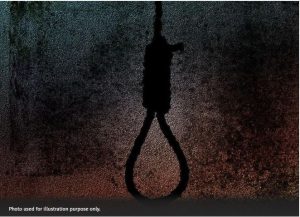22 Sep Hearing Before Death Sentence: SC refers to Constitutional bench framing guidelines on mitigating circumstances
CONTEXT
The Supreme Court has referred to a larger Constitution bench of 5 judges the issue of framing uniform norms for awarding the death sentence The 3 Judge bench headed by CJI UU Lalit observed that the prevailing practice “places the convict at a hopeless disadvantage, tilting the scales heavily against him”. This move is hailed as a much-needed reform in awarding death penalty since there exist differences of opinion and approach in deciding whether the Court is obligated to hold a separate hearing of sentencing after recording the conviction of the accused for a capital offense.

CONSTITUTIONAL PROVISION OF DEATH SENTENCE AND JUDGMENTS
- Under Section 235(2) CrPC, If the accused is convicted, the Judge shall..hear the accused on the question of sentence, and then pass sentence on him according to law.
- The apex court in Bachan Singh v State of Punjab(1980) upheld the constitutional validity of death penalty and established the “rarest of the rare” principle to decide if death penalty should be given to the convict. Court also held that after awarding death penalty, court would conduct another hearing where the convict would place mitigating circumstances before the court to convince him why he shouldn’t be granted death penalty.
- While the State can present aggravating circumstances against the accused during the trial, the convict can produce mitigating factors only after conviction. This inherently discriminatory.
- Due to some benches conducting hearing of sentencing the same day after awarding the death sentence, other benches considering this to be against principles of natural justice, a lot of ambiguity has arisen.
- The CJI in present case considered if mitigating circumstances ought to be brought to the attention of the trial court at the very stage of framing charges or even after the conclusion of the prosecution evidence.
AGGRAVATING AND MITIGATING CIRCUMSTANCES
- Aggravating factors may increase a sentence, making the crime more serious in nature. For example, if the accused is a Repeat/Habitual offender, if the victim was vulnerable due to her age or mental or physical condition, if the crime was a hate crime, etc.
- Mitigating factors on the other hand represent extenuating circumstances that might lead to a reduced sentence. For example young age of the suspect, chances of the accused of not indulging in commission of the crime again, psychiatric disorder or addiction, etc
- Supreme Court in its reference stressed that a trial court must take into account “the social milieu, the age, educational levels, whether the convict had faced trauma earlier in life, family circumstances, psychological evaluation of a convict and post-conviction conduct, were relevant factors at the time of considering whether the death penalty ought to be imposed upon the accused”.
THE NEED FOR UNIFORMITY
- In Manoj and Ors vs. State of MP, Supreme Court pointed to the absence of legal framework to handle death penalty sentencing and the subjectiveness and arbitariness of judges involved.
- Machhi Singh vs. State of Punjab gave judicial recognition to the notion of “shock of collective conscience” as a ground for imposition of the death penalty. However, it failed to clearly define in what circumstances would amount to “shock of collective conscience”
- The lack of guidelines often make the poor and vulnerable bear the brunt. In a 2016, Project 39A study by National Law University Delhi analyzed profiles of 385 death row prisoners and found that 76 per cent of such prisoners belonged to scheduled castes and scheduled tribes, other backward classes or religious minorities and over three-fourths were from economically vulnerable sections.
- The present three-judge Bench said a uniform approach as to when and how to afford an accused opportunity to present mitigating circumstances before their condemnation to death after the crime is declared “rarest of rare” should be decided authoritatively by a Constitution Bench.
WAY FORWARD
Awarding a death sentence is a serious matter and trial courts should do so only after thoroughly weighing and balancing the aggravating and mitigating circumstances. The accused should be allowed to lay down mitigating factors at the initial stage only and a humanistic approach is needed. The drafting of uniform guidelines by the Supreme Court will give much needed clarity to the issue. There needs to be additional review of the fact whether death penalty is needed since it has been done away in majority of the developed and developing countries Law Commission Report, 2015 on Death Penalty recommended abolishing death penalty and retaining it only for terrorism related offences and waging war against the country. A reformative approach to punishment in need of the hour.
SOURCES
https://bit.ly/3S42w7h (The Indian Express)(Life and death: The Supreme Court’s initiative to raise the bar on capital punishment is welcome)
https://bit.ly/3dtGQm9 (Th Hindu)(Death penalty case: SC refers to 5-judge bench on framing guidelines on mitigating circumstances)
https://bit.ly/3SjEgxA (The Indian Express)(Approach to death penalty: Why Supreme Court has decided to settle differences among judgments)
https://bit.ly/3fcR2Qp (The Hindu)(Knowing the killer: On SC referring death penalty issues to Constitution Bench)
Plutus IAS Daily Current Affairs Eng Med 22 Sep 2022



No Comments